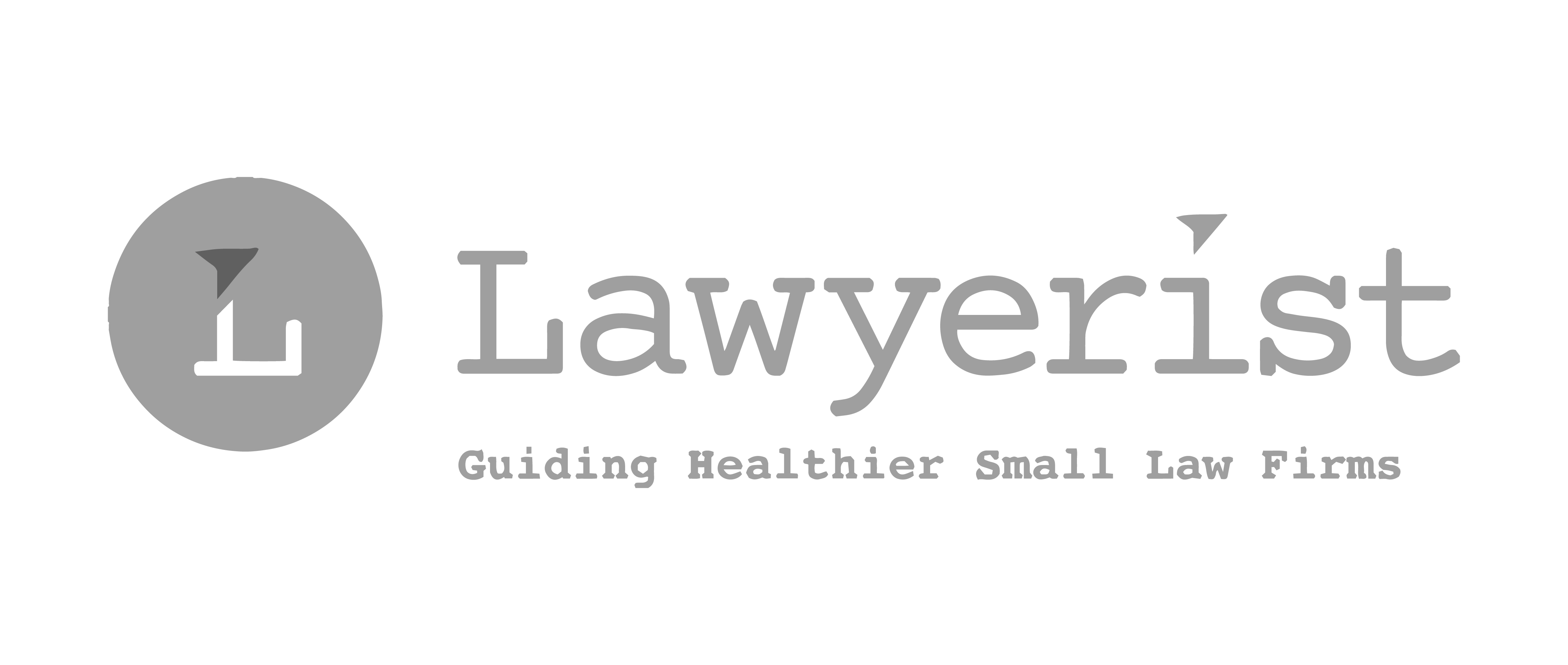10 Practical Meditation Takeaways From “The Anxious Lawyer”
Meditation relieves stress and anxiety, increases focus and productivity, and helps you let go of bad habits. There are other benefits, including the ultimate goal of transforming the way you see yourself and the world.
But you already know that or some of it and you’ve yet to start a meditation practice. Is it because you’re not sure how to get started and what to do or even what exactly meditation is? This is where many people with some initial interest get derailed. Or maybe it’s just me and I’m projecting.
Here’s how the terrific and important new book, The Anxious Lawyer, describes meditation:
While many meditation traditions come with philosophies, religious beliefs, rituals, and specialized equipment (Oy!), meditation itself is simply a form of mental training…to settle and focus the mind.
The “Oy” is mine.
What does this mean? In practice, you sit quietly for a bit every day, get to know your mind, your thought patterns, and how to control them.
You learn to control how you react to and process events in your life. You retain an inner sense of well-being and strength enabling you to handle difficult situations that inevitably pop up and outcomes which you have little or no control over.
The book by Jenna Cho (@Jeena_Cho) and Karen Gifford (@karengifford) breaks it down by addressing questions we typically have about meditation and mindfulness in simple, relatable, language. The book, which is also a guide, is chock full of useful, actionable, information and how-to’s.
Here are some practical meditation takeaways from the book to get you started.
1. Start out by meditating for 10 minutes a day, every day – It doesn’t matter how long you meditate, do it every day. Make it a habit. Yep, it’s all about the power of habit.
2. Get comfortable – Sitting on a cushion on the floor with crossed legs isn’t for everyone. Sit in a comfortable position, whether it be on a couch, bench, or office chair. Nothing brings a habit-forming process to a screeching halt like dread. Get comfortable.
3. Set an intention for your meditation practice – The language in the book describes the process of setting your intention beautifully and I can’t possibly do it justice in a list item. Here’s a quote:
“By taking the time to think clearly about exactly what you are looking to get from your practice, you focus your efforts, even if you do so unconsciously. And by defining in a clear way what you’re hoping for, you are much more able to take advantage of opportunities to fulfill those hopes than if you begin your practice without really know what you are trying to get out of it.”
Perhaps think of it as a lighthouse to guide you when things seem foggy and to encourage you with its perpetual glow.
4. Breathe – This is the tough part. Actually meditating. Paying attention to your breathing is meditation at its most basic, yet powerful. Breathe with your stomach, not your chest.
5. Don’t be distracted by distractions – Meditation makes you even more aware so you’ll probably encounter many new thoughts. That’s OK. Simply guide yourself back to your meditation practice. You’ll get better with, well, practice.
6. Repeat a mantra – Still distracted? Concentrating on your breathing not doing enough to keep your mind from wandering? Try repeating a mantra. The book guides you through the process of choosing a mantra that settles your mind. Make is something pleasant since you’ll be repeating it often.
7. Choose a meditation style and stick with it for six months – As you go through the book and discover different meditation styles, choose one method and make it your meditation practice for next several months. The authors recommend at least six months.
8. Follow a program – The book sets out an 8-week guide that starts at the beginning. Literally. The first week’s exercise is called “Beginning to Meditate.” Next is “Mindfulness” all the way to week eight, “Gratitude.” A meditation log accompanies each session.
9. Join a local meditation group – Community provides support and helps you to keep going so find and join a group in your town that meets regularly to meditate. This is important; I researched and found a neighborhood center when I was exploring Tai Chi and the group is the only thing that kept me going. Can’t find a group? Get a meditation buddy.
10. Log your progress – Keep a log or journal of the dates, duration and experience of each session and review occasionally to observe your journey. Don’t spend more than five minutes a day on this. The book contains narrative examples of your experiences to record.
Tip: Check out Insight Timer. This recommendation is not from the book but it is one that the authors use. The app is approaching 1 million meditators and provides a wonderful menu of guided meditations to choose from with durations from a couple of minutes to open-ended sessions. Based on one of the author’s use and recommendation, I downloaded the app. My neophyte sweet spot is around 10 minutes – usually on the occasional morning at my desk before I begin working.
Share post:








